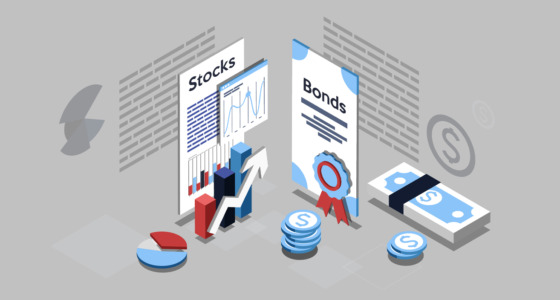

New investors are jumping into the market, and experts are calling it “a brave new dawn.” Although, the trend is going up and down. A hardly surprising but fun fact is that over the last 12 months, people were least interested in investing in the period between Christmas and New Year.
If you’re not unpacking your presents or waiting for the New Year’s Eve Ball to drop, it’s a good time to start your investing journey. For this, you need to figure out how much of your income should go toward investing.
Factors to consider when allocating investment capital
No one can tell you how to manage your investment portfolio before assessing your personal financial situation and drawing a future roadmap. You can do this yourself if you consider these areas of importance:
- Your personal income, as well as your family’s net income
- Your and your family’s needs—current, short-term, and long-term
- Your investment goals—e.g., rainy day funds, buying a home, starting a business
- Expected returns
- The timeframe for your investments
- Your comfort zone in taking on risk
How much to invest: Suggestions by income range
As a ballpark figure, you can aim to invest 10%-15% of your annual income. But depending on your income bracket, it makes sense to adjust the percentage. Here are four income brackets and their “investing sweet spots.”
Consider these suggestions as a starting point and make a decision that suits your financial situation and goals.
$20,000-$35,000
Let’s assume that your goal is to retire as a very prosperous person, which is 35 years from now. The average return of your investment will be calculated based on the average stock market return: 10%.
If you make $20,000 a year, you need to be investing 15% of your income. If you make $35,000, investing 15% will comfortably put you over the million-and-a-half threshold.
$35,000-$50,000
If you make anywhere from $35,000 to $50,000 per year, you should invest 10% of your income to be able to have savings above the 7-figures. Investing at $50,000 a year should help you reach an even higher goal: $1.5 million.
$50,000-$70,000
If you are earning an income in the $50,000-$70,000 price range, invest 7%. In 35 years, with an average return of 10%, you can make $1-$1.5 million.
$70,000+
Finally, to reach the 7-figure status by retirement, you need to invest 5% of your income of $70,000+. If you are making over $70,000, you can reach a higher goal than a million.

What to do if you can’t afford to invest
If you don’t have the wiggle room to invest just yet, start by building up a solid financial foundation:
- Track your spending and find areas where you can trim it.
- Set aside small amounts of funds each month.
- Keep your savings in a high-yield savings account.
- Cut back on rent (move to a different area, downsize).
- Upskill at work to get a promotion.
- Take up a side hustle.
- Start investing small— spare change at first, higher amounts as you save up.
The bottom line
You should invest as much as you can afford without it compromising your financial health and quality of life. Or you can look at it differently: invest as much as you can afford to lose. Whatever your outlook is, remember that returns are not guaranteed. Don’t invest all your savings at once; grow your portfolio over time instead.








